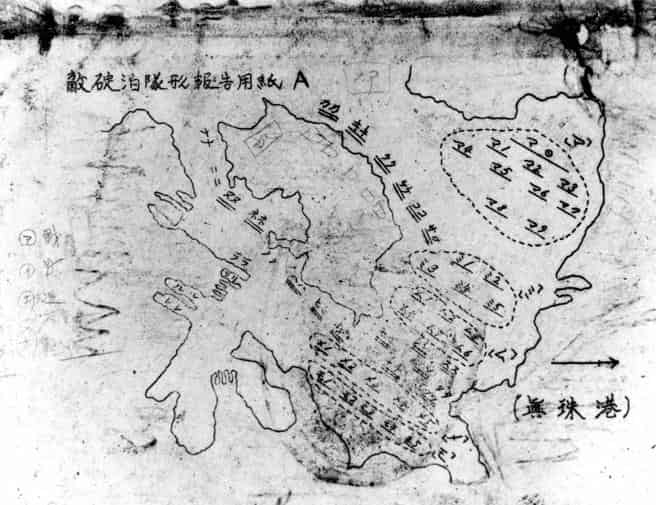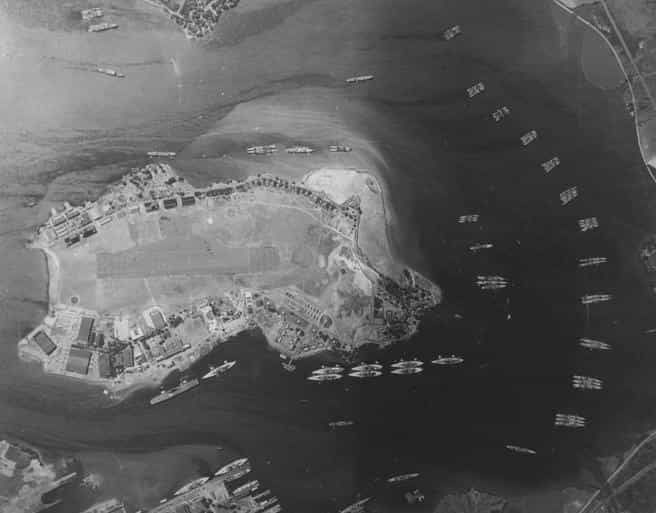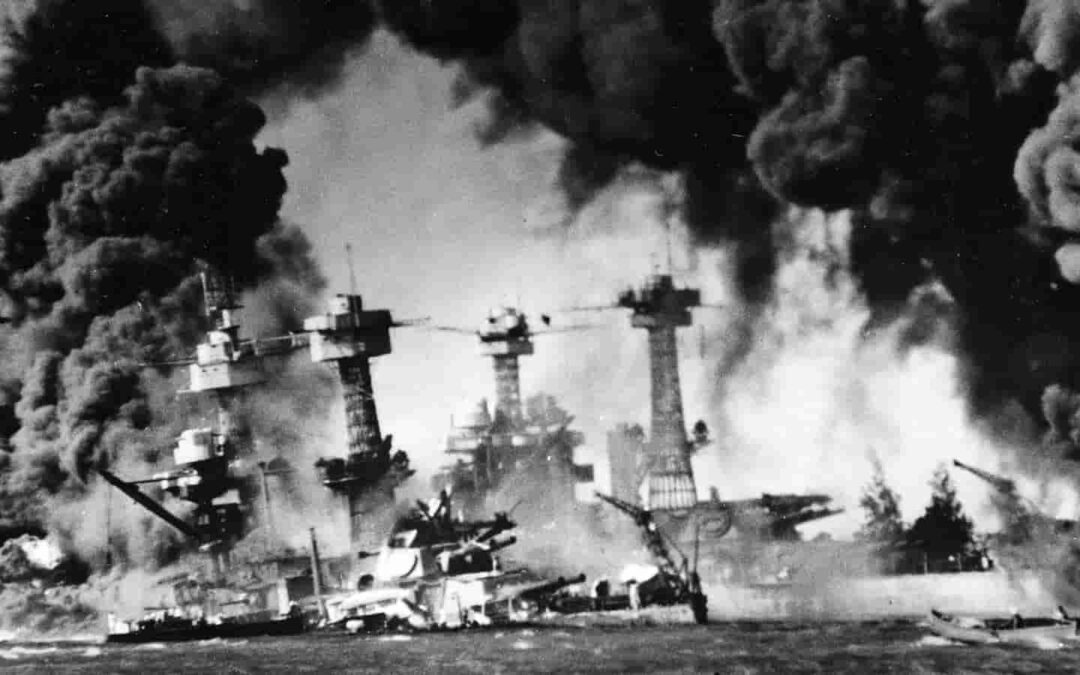Pearl Harbor: This was the attack that would change the world.
The Japanese attack on the US Pacific naval base, which occurred on December 7, 1941, defined the course of World War II.
“There was no other option but to get up.” This was justified by Shigenori Togo, Japanese Foreign Minister in 1941, the Japanese attack on the US naval base at Pearl Harbor.
An aggression that changed the course of the Second World War – plunged an isolationist United States into the conflict – and that, from the Eastern perspective, broke with the dynamics of history in Asia.
Why did Japan attack Pearl Harbor?
Precisely from the Japanese perspective, the germ of the attack on Pearl Harbor was found ten years earlier, with the Japanese invasion of China that ended up generating the puppet state of Manchukuo.
The crash of 1929 also affected Japan, whose population surrendered to the military and the solution they proposed: territorial expansion through war to feed on raw materials.
Manchukuo was the bridgehead in continental Asia, legitimized by the presence of Pu Yi, former emperor of China, and which served as a base for expansion to the south: from French Indochina to British Malaysia or the Netherlands Antilles.
That is to say, towards the colonies that the turbulent Europe of the 1930s had left in a semi-abandoned state.
By 1940, Japan’s continental expansion made it a strategic ally in an already-guessed global conflict.
After committing not to attack the USSR, Tokyo joined the Berlin-Rome axis in the Tripartite Pact signed on September 27, 1940, which gave Japan territorial primacy in Asia.
And it was at that moment that the United States felt the threat. With the USSR concerned about its European front, the expansion in the Pacific of the Japanese Empire found only one possible resistance: that of Washington.
American isolationism
The United States, within the presidency of Franklin D. Roosevelt – and probably despite himself – had opted for isolationism.
FDR had failed to convince Congress to lend aid to the Spanish Republic in 1938 and had pledged – in September 1940: that is, in the midst of a reelection campaign – not to send Americans to fight abroad. I
n this way, the White House tried to stop the Japanese by way of sanction, mainly fuel. Tokyo’s response was not to give up on its expansionist endeavor, despite the fact that it is carving out a new enemy.
However, throughout 1941 Japan and the United States negotiated a possible agreement that would end tension and the trade embargo. The pact, drawn in November of that year, encountered an insurmountable obstacle : Chiang Kai-shek.
Although the agreement led Japan to withdraw from Indochina, to reduce its military presence on the Asian continent and opened the door for Tokyo to abandon the Triple Axis, it recognized the existence of Manchukuo, something that the Chinese nationalist leader was not willing to tolerate.
A series of diplomatic confusion about what was agreed – and which ended in the Hull Note, an almost final point of the talks between Tokyo and Washington – led to the breakdown of the negotiations.
It was November 26, 1941. On the same day, six aircraft carriers of the Japanese Imperial Navy left the port of Iturup, in the Kuril Islands, bound for Pearl Harbor.

How many Japanese planes attacked Pearl Harbor?
The six Japanese aircraft carriers – Akagi , Kaga , Sōryū , Hiryū , Shōkaku and Zuikaku – carried more than 400 aircraft bound for the United States’ Pacific Naval Base, where the North American fleet was resting.
The eleven days of crossing had to be carried out in the most absolute of secrets, since the success of the attack, designed since the beginning of 1941, depended on the surprise factor.
The goal was to override the naval force in the U.S. Pacific. With German U-boat submarines controlling the North Atlantic, US isolationism would no longer be a strategy to become an imposition.
On the other hand, the geography of the Pacific – a multitude of islands, impossible extensions – would force Washington to focus its military force on defending the country’s west coast.
And the surprise factor worked. The Japanese fleet remained hidden until 3:42 a.m. on December 7, when one of the submarines accompanying the aircraft carriers was sighted by a US minesweeper, the Condor, which did not warn of the severity of the danger.
Two hours and 28 minutes later, at 6:10, the first wave of Japanese planes left for their target: 183 aircraft that were to destroy, in this order, all possible battleships, aircraft carriers, cruisers, and destroyers.
Additionally, Zero fighters had an added goal: to take down airfields to prevent an immediate defense from the second wave of attacks.
Unknowingly, the United States’ own base is aiding its enemies. Japanese pilots use a local radio, located in Honolulu, as a guide to their target.
It is this station that informs them that the clouds will not be an obstacle during the attack: ” It is cloudy in the mountains, but visibility is good .” The report was released at 7:40 a.m.
Shortly before, the message from the Condor minesweeper had already reached their reference ship, the Ward: they had attacked a submarine that was in defensive waters of Hawaii.
The Pacific Fleet General Staff decided to do nothing and wait for confirmation of the attack. They considered it one of the false reports of submarine attacks that had been received at that time.
But the real drama was in Washington: at 7:33 Hawaii time, the intelligence services managed to decrypt a Japanese message telling their negotiators – the disagreement over the Hull Note had not ended diplomacy – to abandon the conversations.
Immediately transmitted to President Roosevelt and General George Marshall, Chief of the General Staff, it was decided to warn Pearl Harbor of the situation.
The message , however, would not reach Pearl Harbor until 11:45, when only room for tragedy remains at the base.
How did the attack on Pearl Harbor begin?
December 7, 1941. At 7:55, the first explosion sounds at Pearl Harbor. The attack has begun.
And on the Japanese radio there is another message: “ Tora! Torah! Tora ! ”. Mitsuo Fuchida, who leads the first wave, transmits the key that lets Admiral Yamamoto, strategist of the attack, know that Pearl Harbor has no defense.

Three attack groups
The first wave of the Japanese attack divided its forces into three groups.
The first, consisting of 89 Najakima B5N-Kate type bombers, aimed at ten US ships: USS Maryland, USS Tennessee, USS West Virginia, USS Arizona, USS California, USS Nevada, USS Oklahoma, USS Utah, USS Raleigh and USS Helena. They were joined by the USS Vestal, a repair ship attached at that time to the USS Arizona.
A second group, made up of 51 Aichi D3A -Vals-type bombers, would attack the Hickam and Wheeler airfields.
The rest – 43 Mitshubishi A6M2 fighters, type Zero – would contribute to the destruction of the aerodromes but had as their primary objectives checkpoints and communications: Ewa Station, Belows Air Control, Ford Island Air Control and its attached aerodrome. and the hangars of Kaneohe and Barbers Point.
Just 15 minutes after the attack began, Japan claims its first big piece: the USS Arizona, a 185-meter-long battleship with more than 30,000 tons of cargo.
One of the Kate assigned to the ship as a target manages to launch a bomb that crosses the ship’s different decks until it hits the powder magazine, which stores 450,000 kilos of powder.
The brutal blast will split the ship in two and kill 1,177 people – nearly half of the attack’s fatalities. The containment of the fire caused by the explosion will not conclude until December 9.
Soon, another large American ship is defeated: the USS Oklahoma. Three torpedoes hit it in the moment of greatest helplessness, overturning it.
Although the crew went to sea to try to save themselves, the 32 Kates assigned to destroy the ship had no mercy on the crew, who were machine-gunned while trying to save themselves.
Only the main mast of the battleship allowed it to sink completely. 429 of the 864 assigned crew members perished in just a few minutes.
Another 64 would die aboard the USS Utah, making up the three main material losses from the attack. Neither Arizona nor Oklahoma nor Utah could be refloated.
Twenty minutes after the attack began, Pearl Harbor was in chaos. Of the little that can be done in the mess is to try to save the smallest, most maneuverable ships.
This is the case of the destroyers Helm and Monaghan who, in their flight, discover that the Japanese attack is not only by air. Both run into two torpedo-launch mini-submarines, and manage to sink them.
Helm also manages to rescue and arrest one of the occupants of the Japanese submersibles, Kazuo Sakamaki , who becomes the first prisoner of war captured by the United States in World War II. Sakamaki will also be the only prisoner made during the attack.
After half an hour of bombardment, the Japanese torpedo launchers retreat, but the Zero fighters do not, which continue to rampage through the airfields attached to Pearl Harbor to prevent a response.
The anti-sabotage policy followed by the US military, which consists of tying some planes to each other, facilitates their work: being grouped together constitutes a simpler objective. Meanwhile, in the port, the USS Nevada, seriously damaged, goes to sea to escape the foreseeable second wave.
The Japanese aviation does not attack it: they plan to sink it in the second wave and before it leaves the port, so that it blocks the exit and leaves all the ships trapped. But the Nevada settles at Hospital Point, one of the sides of the bay, where it runs aground, allowing it to survive the attack.

The second wave
Just 45 minutes after the first attack, the second wave of Japanese planes is already flying over Pearl Harbor. As in the first, it is made up of three groups:
54 Kates that aim to control Kaneohe and the Hickman aerodrome ; as well as 27 Zero with whom they share a goal and who also have an order to sweep Pearl Harbor.
They are accompanied by 78 Waltzes that add to the ships subject to the first attack the USS Neosho and the USS Shaw, in addition to the Navy military installations at Pearl Harbor.
Despite the circumstances, the Americans have managed to organize, more with will and courage than from the strategy, a defense wall with the anti-aircraft batteries of the ships docked at Pearl Harbor.
Japanese planes focus their attack on the USS Pennsylvania , which is in a dry dock alongside two cruisers: the Cassin and the Dowes. Both will be rendered useless and withdrawn from service until their full repair in mid-1943.
Although the battleship was not among the Japanese ‘primary objectives, it has managed to activate its defenses and become the leading US force against the attack. Damage caused by Japanese aviation left it unusable until March 1942.
Meanwhile, Japan was still collecting pieces. The attack on the USS Shaw caused an explosion such that parts of the ship were found 800 meters away, forcing it to also abandon the ship, which was partially sunk.
How long did the attack on Pearl Harbor last?
At 9:45, an hour and fifty minutes after the first attack, the Japanese withdrew from Pearl Harbor. There would be a third wave , which is still under debate. In any case, the convenience of a third bombardment is more part of the myth than of the history.
Attack on Pearl Harbor: Casualties
The outlook at Pearl Harbor is bleak and only bad news remains. At 15:00, General Walter C. Short receives a message that sounds sarcasm: the General Staff announces the imminent attack on Pearl Harbor.
It is the conclusion of the message decrypted 17 minutes before the attack and sent, due to weather conditions, by commercial telegraph, and not by radio. For further shame, the message reached Pearl Harbor at 11:45.
How many died in the attack on Pearl Harbor?
At Pearl Harbor it is time to count the casualties. After days of work, the United States will number more than 3,500: 2,403 dead (2,390 in the December 7 count) and 1,178 wounded.
Japan must mourn the loss of 65 men : 64 deceased and one prisoner. In addition, they will have lost 29 planes, 15 of them directly killed by American anti-aircraft batteries.
How many ships sunk at Pearl Harbor?
The US chapter of material casualties adds further pain to the drama. Up to 19 ships have suffered damage of varying degrees, with eight of them sunk, although five may be refloated: the USS Cassin and USS Shaw cruisers, the Oglala miner, and the battleships USS West Virginia and USS California.
In addition, the Japanese raid on the Hickam airfield, in particular, and the rest of the airfields has been fatal. 188 planes, most of them located outside the hangars, have been destroyed.
The only good news regarding the force is that the three Pacific aircraft carriers – Entreprise, Lexington and Saratoga – were off base.
Good and relative news: the Pacific War, which had just begun, was to be decided by ships such as battleships and cruisers, due to their speed and mobility to cover a definitely large territory.
Attack on Pearl Harbor: Consequences
A day later, on December 8, 1941, President Franklin D. Roosevelt addressed the nation and Congress.
In the wake of the attack, isolationism is impossible and FDR will break his promise not to send Americans to fight abroad.
The Senate finally approves the declaration of war with a forceful vote: 388 yes and a single no. Thus, the United States goes to war against Japan and the Berlin-Rome axis.
“Yesterday,” said Roosevelt, “December 7, 1941, a date that will live in infamy, the United States of America was suddenly and deliberately attacked by naval and air forces of the Empire of Japan.”
The participation of the United States in the Second World War will be capital for the defeat of Nazism in Europe through the Normandy Landing, in which, incidentally, one of the damaged ships in Pearl Harbor participated: the USS Nevada.
On the other side of the world, the war with Japan would end on August 15, 1945 after the nuclear attacks on Hiroshima and Nagasaki, which would destroy the Japanese Empire.
What does the word Pearl Harbor mean?
Pearl Harbor (in Hawaiian, Puʻuloa, “pearl port”, “pearl water”) is a natural harbor within a coastal lagoon on the island of Oahu, Hawaii.






